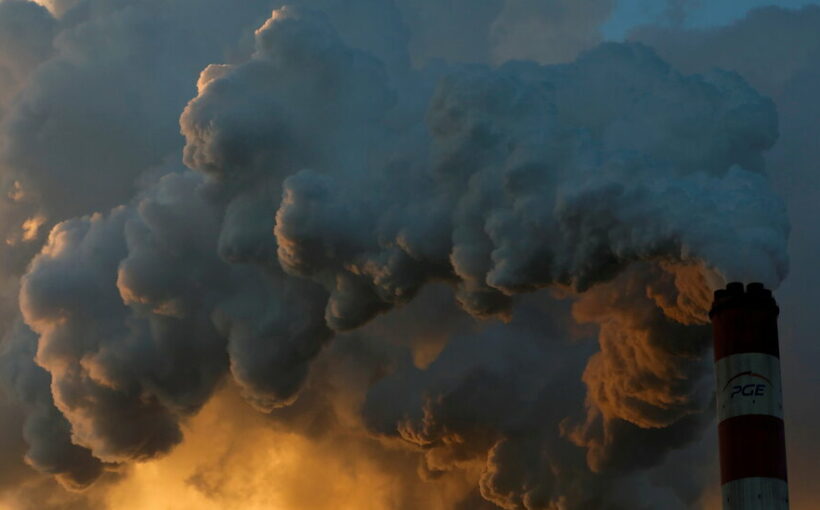On Monday the Intergovernmental Panel on Climate Change, a scientific body convened by the United Nations, released a major new report concluding that the world cannot avoid some devastating impacts of climate change, but that there is still a narrow window to keep the devastation from getting even worse.
The report, based on the analysis of more than 14,000 studies, is the clearest and most comprehensive summary yet of the physical science of climate change. It lays out what the climate was like in the past, what it’s like now and what it will be like for decades to come. And it shows how humans can affect future climate through actions they take — or don’t take — now to reduce emissions of carbon dioxide and other heat-trapping gases.
Here are five takeaways from the report:
Human influence has unequivocally warmed the planet.
This report is the sixth assessment of climate science by the U.N. group, and unlike previous reports, this one dispenses with any doubt about who or what is responsible for global warming. “It is unequivocal that human influence has warmed the atmosphere, ocean and land,” the report says in its very first finding.
Observed increases in carbon dioxide in the atmosphere since 1750 can be directly tied to human activity, largely the burning of coal, oil and other fossil fuels as the world became industrialized. Those emissions have increased greatly over time and continue today, as the world grows even warmer. And the impacts are being felt in every region of the world.
Climate science is getting better and more precise.
One of the reasons the report can conclude without a doubt that humans are responsible for global warming is that climate research has greatly improved, even in the eight years since the previous U.N. report was released.
There is much more observational data — temperature measurements and other data from instruments on land, in the oceans and in space — that reduce uncertainty as to what is occurring. The improvement is especially noticeable in some less affluent parts of the world that historically had little capacity for collecting climate data.
Computer models that simulate the climate have also greatly improved, and there is more computer power to run these simulations faster so that they can be repeated over and over. These improvements, plus the ability to plug more and better data into the models, give scientists more confidence that their models are correctly forecasting future climate.
In the last decade great strides have been made in attribution research, which seeks to examine possible links between climate change and specific extreme events like heat waves and heavy rains. Research teams can now quickly analyze an event and determine whether warming made it more or less likely to have occurred, adding to overall confidence in the nature of climate change.
We are locked into 30 years of worsening climate impacts no matter what the world does.
The world has already warmed about 1.1 degree Celsius (about 2 degrees Fahrenheit) since the 19th century. The report concludes that humans have put so much carbon dioxide and other greenhouse gases into the atmosphere that this warming will continue at least until the middle of the century, even if nations take immediate steps today to sharply cut emissions.
That means some of the noticeable effects the world is seeing now — like extreme droughts, severe heat waves and catastrophic downpours and flooding — will continue to worsen for at least the next 30 years.
Some other impacts will continue for far longer. The enormous ice sheets in Greenland and West Antarctica will continue to melt at least through the end of the century. Global sea level will continue to rise for at least 2,000 years.
Climate changes are happening rapidly.
The report found that the some of the changes are greater than they’ve ever been compared with previous periods of time ranging from centuries to many millenniums.
Concentration of carbon dioxide in the atmosphere, for example, is greater than at any time in the past two million years. The extent of late-summer sea ice in the Arctic is lower than it’s been any time in the past 1,000 years.
But the report also found that changes are happening more quickly now than even in the much more recent past. The rate of sea level rise has roughly doubled since 2006. Each of the past four decades have been successively warmer than the previous one. Heat waves on land have become significantly hotter since 1950 and marine heat waves — bursts of extreme heat in the ocean that can kill marine life — have doubled in frequency in the past four decades.
There is still a window in which humans can alter the climate path.
The report laid out five climate futures, in which humans take varying steps to reduce the emissions that cause warming. Under all of them, the world will reach 1.5 degrees — the more ambitious of the targets set by the Paris climate change agreement in 2015 — by 2040 or sooner.
Under most of the scenarios discussed in the report, warming will continue well beyond 2040, through the remainder of the century. In the worst cases, where the world does little to reduce emissions, temperatures by 2100 could be 3 to 6 degrees Celsius (5.5 to 11 degrees Fahrenheit) above preindustrial levels. That would have catastrophic consequences.
But the report shows that aggressive, rapid and widespread emissions cuts, beginning now, could limit the warming beyond 2050. In the most optimistic scenario, reaching “net zero” emissions could even bring warming back slightly under 1.5 degrees Celsius in the second half of the century.
Such a scenario would be a mammoth and expensive undertaking for the world. It would also require a level of political will that most governments have so far been unable to muster
Source: Read Full Article
